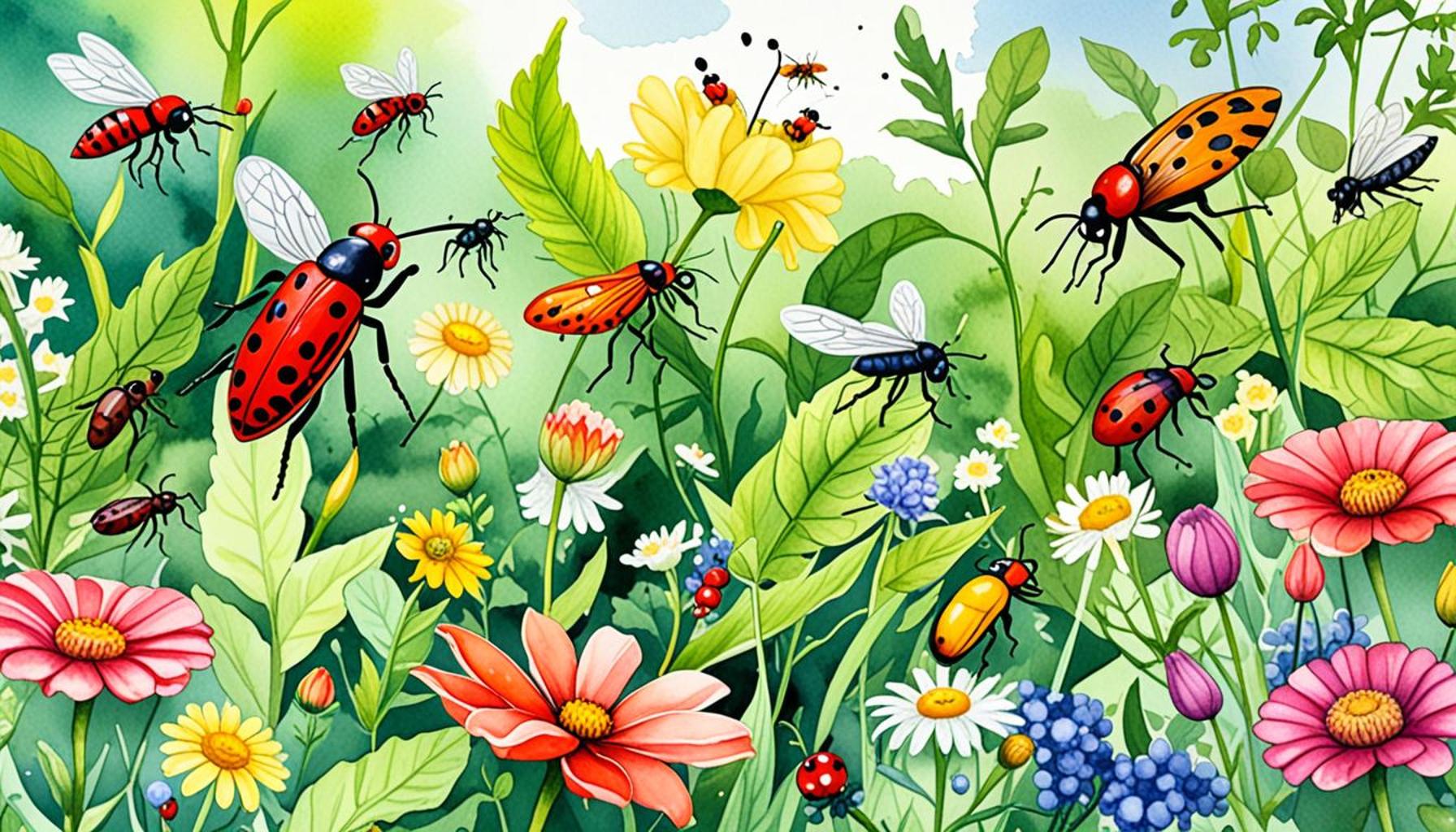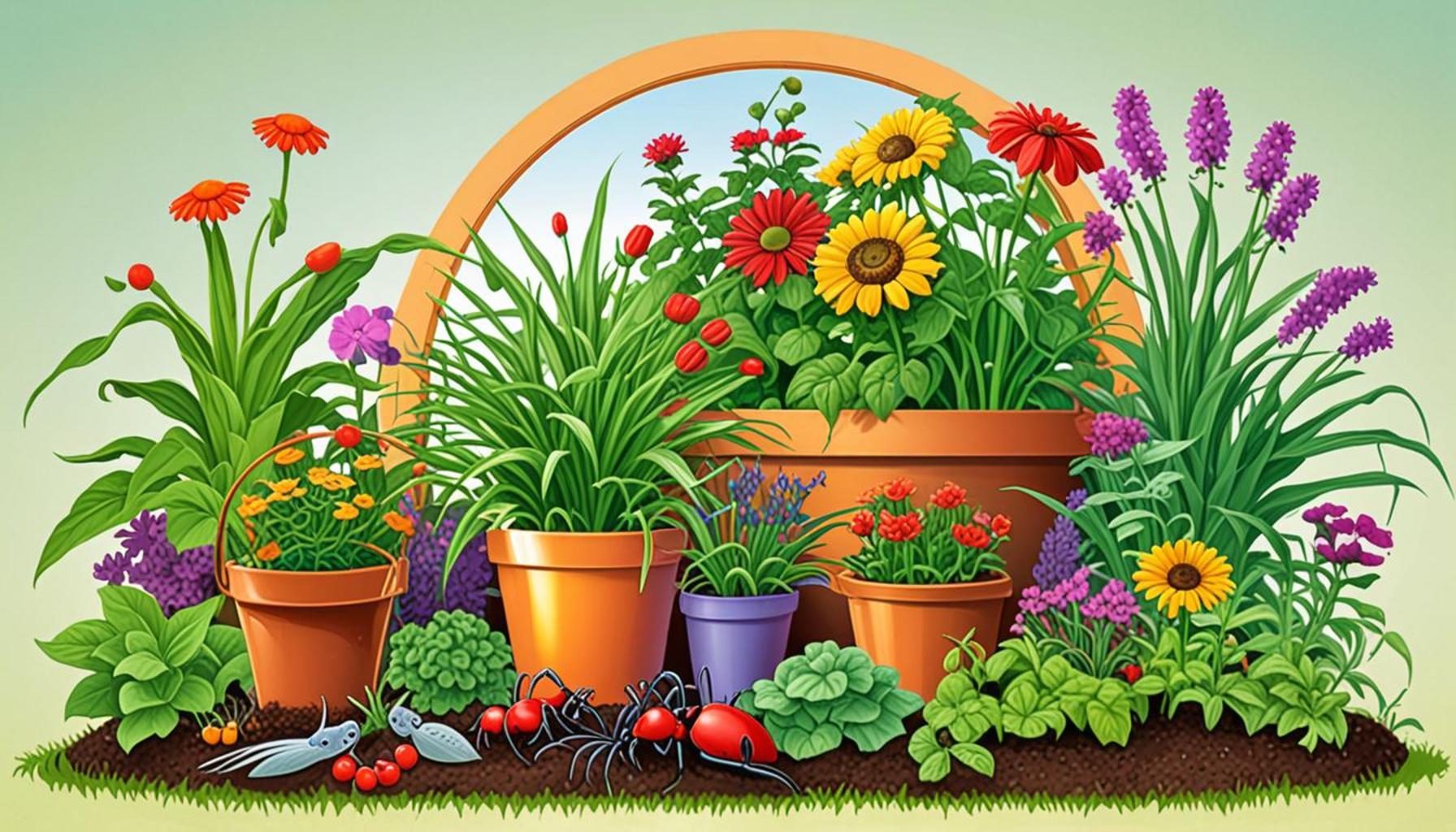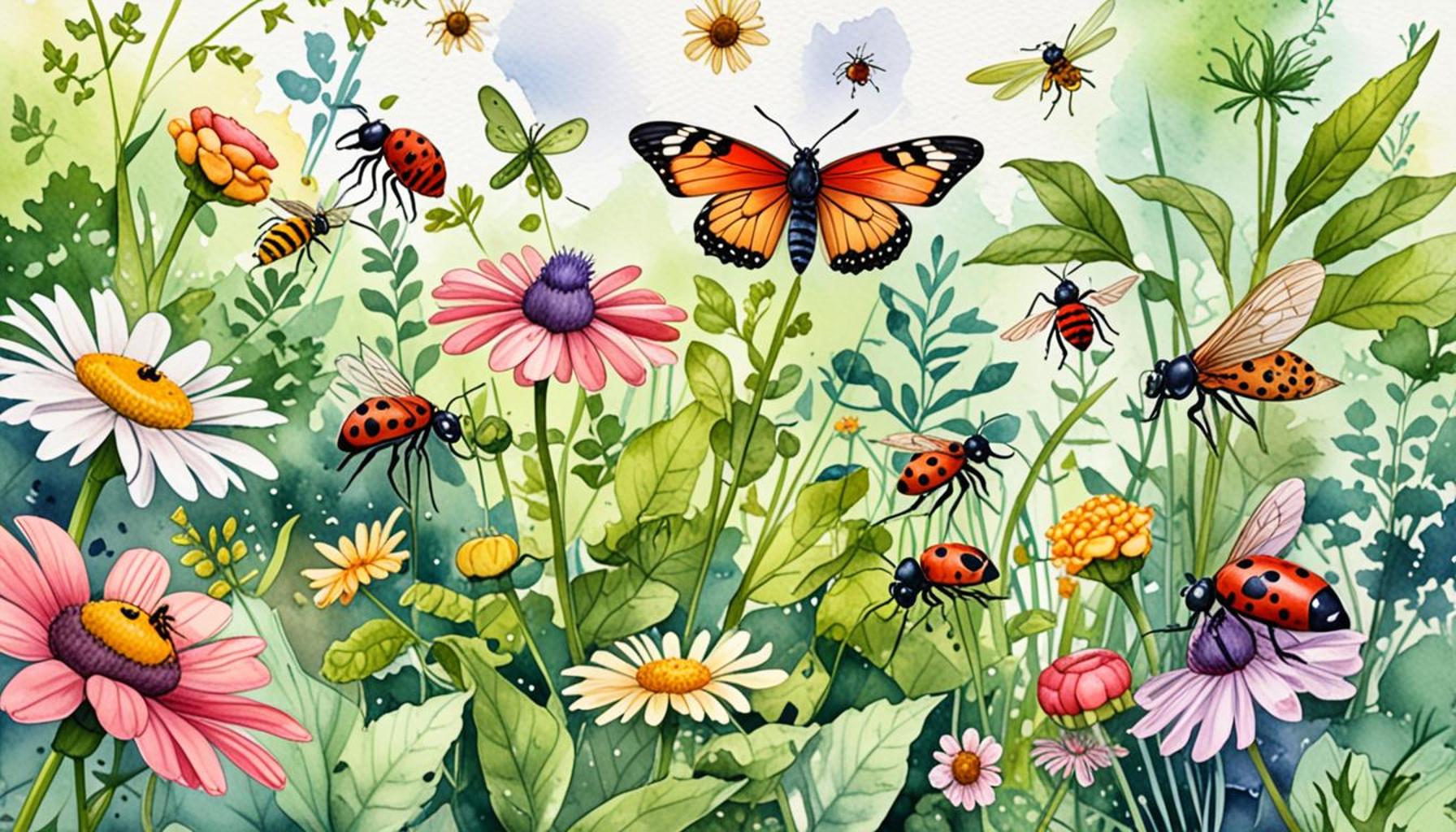Identifying Common Pests in Beginner Cultivations
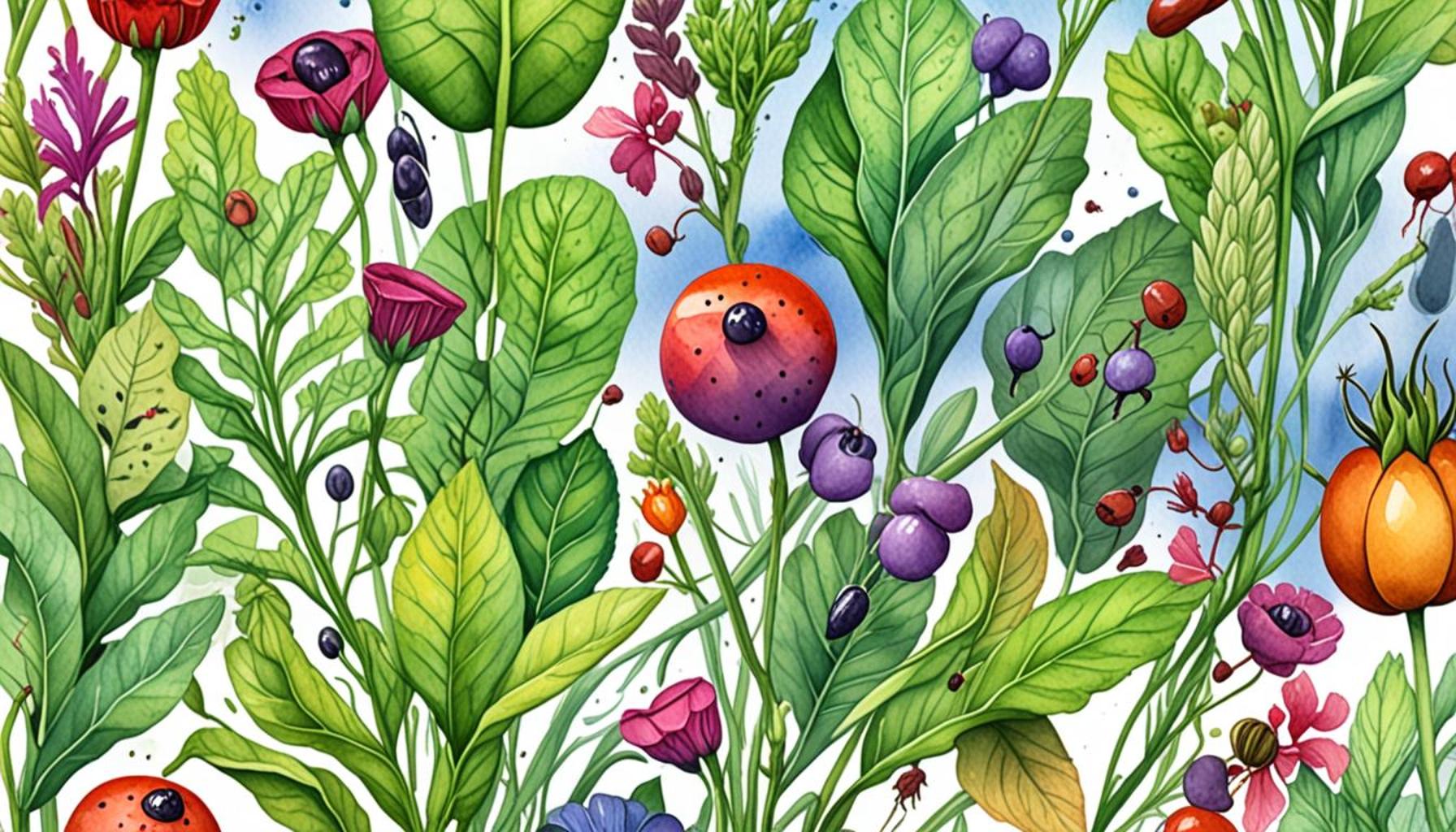
Understanding Common Garden Pests
Every gardener knows the thrill of watching their plants thrive. However, with this joy often comes the challenge of dealing with pests. Identifying common pests is crucial for beginner cultivators to protect their precious greenery. From the delicate blossoms of roses to the robust leaves of tomatoes, no plant is entirely safe from pest intrusion.
Understanding your garden’s potential threats can save you time, effort, and resources. This knowledge empowers you to act promptly and decisively, ensuring your plants not only survive but flourish. Here are key pest categories you might encounter:
- Insects: Start with sap-sucking insects like aphids, tiny green or black bugs that cluster on new growth, eventually causing leaf curl and stunting growth. Spider mites, often found on the undersides of leaves, can leave fine spider webs and speckled foliage in their wake, signaling serious damage. Whiteflies excrete a sticky substance called honeydew, attracting further pests and leading to the growth of sooty mold.
- Diagnosis: Look for specific signs such as wilting leaves, discoloration, or visible insects themselves. Focusing on the undersides of leaves is particularly important, as many pests prefer to hide in those sheltered spots.
- Environmental Factors: Temperature and humidity are crucial elements that can exacerbate pest problems. For example, high humidity creates a perfect breeding ground for both insects and fungal diseases. Keeping your garden well-ventilated and free from excessive moisture can deter many unwanted guests.
Recognizing these pests early on can make the difference between a flourishing garden and a devastated crop. Regular inspections of your plants are essential, especially after weather changes, which can lead to pest outbreaks. In addition to looking for insects, pay attention to unusual growth patterns. If a plant is growing poorly or looks sickly, it may be a sign that pests are at work underneath the surface.
In this guide, we will delve into the most common pests affecting beginner cultivations. You will learn how to spot, identify, and manage these pests effectively. Cultivating an awareness of pest behaviors and preferences will not only help you in the long run but will also enhance your overall gardening experience. Get ready to safeguard your green space and enjoy a thriving garden! Whether your focus is on blooming perennials or productive vegetable patches, understanding and combating pests is an essential skill for any gardener seeking success.
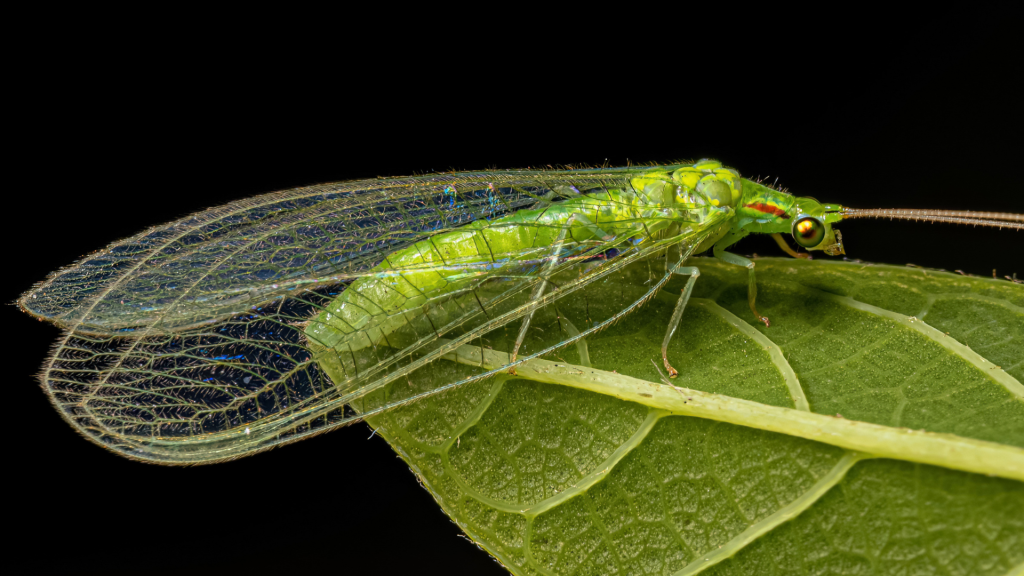
DIVE DEEPER: Click here to enhance your gardening strategy
Recognizing Key Garden Pests
In the journey of gardening, one of the most critical skills a beginner can develop is recognizing common pests that threaten their plants. Effective identification is not merely about spotting the pests themselves; it also involves understanding the symptoms they present and how they affect plant health. While it may seem daunting at first, gaining familiarity with common pests can empower gardeners to take action quickly and protect their investments. Here, we outline some of the most widespread pests you are likely to encounter along with strategies for identification and management.
The Relentless Aphids
Aphids are one of the first pests many new gardeners will notice. These small, soft-bodied insects can range in color from green to black and are infamous for their reproduction rates. Aphids feed by sucking sap from plants, often resulting in curled leaves and stunted growth. Additionally, their honeydew excretion encourages the growth of sooty mold, further hindering plant health.
Mighty Spider Mites
Another enemy in the garden is the spider mite. These minuscule arachnids, often found on the undersides of leaves, can be difficult to see without a magnifying glass. A telltale sign of spider mite infestation includes fine webbing across the plant, along with yellowed or speckled leaves. If left unchecked, spider mites can devastate your plants, making early detection essential.
The Menacing Whiteflies
Similar to aphids, whiteflies can wreak havoc on your garden. These tiny, white insects gather on the undersides of leaves and suck plant sap, leading to wilted foliage and overall decline in plant vigor. Whiteflies also produce honeydew, attracting other pests and resulting in a festering cycle of infestation. Regular monitoring is crucial as these pests can reproduce rapidly under warm conditions.
Identifying Pests: Key Symptoms to Watch For
Understanding the signs of pest presence is vital for quick intervention. Below are key symptoms to watch for that may indicate pest activity:
- Wilting leaves: Often a sign of sap-sucking pests, like aphids or spider mites.
- Discoloration: Yellowing or browning can indicate stress from pest feeding.
- Visible insects: Direct sightings of pests can help confirm suspicions.
- Sticky residue: Honeydew or sooty mold may signal the presence of soft-bodied insects.
Fostering a vigilant pest management routine is key to maintaining healthy plants. Regularly inspect your garden, especially after rainfall or shifts in temperature, which can prompt pest activity. Seasonal changes affect not only the plants but also the life cycles of pests, making this a crucial part of garden care.
Equipped with knowledge and an eye for detail, beginning gardeners will soon find that identifying and managing garden pests becomes second nature. As we further explore specific pest profiles, techniques, and prevention strategies, you’ll be ready to take proactive steps towards safeguarding your thriving green sanctuary.
Understanding the Impact of Pests in Beginner Cultivations
When starting out in gardening or plant cultivation, one of the biggest challenges is effectively identifying and managing pests. Pests can significantly hinder plant growth, reduce crop yields, and even lead to the failure of an entire cultivation project. Knowing how to spot these unwanted visitors early is crucial. Some common pests that beginner cultivators might encounter include aphids, spider mites, and whiteflies. Aphids are small, soft-bodied insects that usually cluster on the undersides of leaves. They can cause significant damage by sucking the sap from plants, leading to yellowing of leaves and stunted growth. Spider mites are another notorious enemy, identifiable by their fine webbing and speckled leaf damage. They thrive in hot, dry conditions and can multiply rapidly if left unchecked. Whiteflies often appear as small, white, flying insects that can also infest crops chiefly by feeding on the plant’s nutrients. Their excretions can lead to the growth of sooty mold, further impairing photosynthesis.To combat these pests effectively, one must understand their life cycles and behaviors. Observing plants regularly and maintaining good gardening practices, such as crop rotation and proper watering techniques, can help keep infestations at bay. Additionally, implementing beneficial insects, like ladybugs and lacewings, can serve as a natural pest control method. These beneficial insects prey on common pests, promoting a healthier ecosystem. By employing a combination of monitoring, identification, and environmentally-friendly pest management techniques, beginner cultivators can safeguard their plants against the potential threats posed by pests.Moreover, understanding the environmental factors that attract pests is essential. For instance, over-fertilization can create lush, attractive foliage for pests. Cultivators should aim for a balanced nutrient regimen that not only supports plant growth but also discourages pest attraction.To summarize, identifying pests early and employing effective strategies are key components in nurturing healthy growth in beginner cultivations. This knowledge not only enhances the growing experience but fosters a deeper appreciation for the intricate balance of the ecosystem.
LEARN MORE: Click here to discover the best watering times for your plants
Understanding Pest Life Cycles and Habits
In addition to recognizing the common garden pests, understanding their life cycles and habits can significantly enhance your ability to manage them effectively. Each pest has unique behaviors and reproduction patterns that, if identified early, can lead to timely interventions. Here are more pests frequently encountered in beginner cultivations, along with their distinctive traits and lifecycle details.
The Resilient Cutworms
Cutworms are a serious threat for young plants, particularly seedlings and transplants. These nocturnal caterpillars typically remain hidden during the day beneath the soil or among debris. As night falls, they emerge to chew through stems at the soil line, often causing complete collapse of the plant.
To identify cutworm damage, look for plants that suddenly topple over without apparent signs of disease. Often, you can spot the cutworm itself by digging around the base of the affected plant, particularly during evening hours. They can be managed through physical barriers, such as collars made from cardboard or plastic, placed around the base of seedlings to deter them from feeding.
The Sneaky Thrips
Thrips, though tiny and often overlooked, can lead to significant damage as they puncture plant cells to feed, resulting in silvery streaks and distortion of leaves and flowers. They are also notorious carriers of plant diseases. Thrips are particularly common during warm weather and can reproduce rapidly, making them a persistent foe.
For effective identification, examine your plants closely; infested leaves may appear discolored or have a stippled appearance. Sticky traps can be used to catch adult thrips and monitor their population. An integrated pest management approach, combining cultural practices, such as regular cleaning of debris, can minimize their presence.
Brownbanded Cockroaches: An Unwanted Visitor
Brownbanded cockroaches often find their way into indoor gardens, especially in kitchens and basements. They thrive in warm, damp environments, making pots and trays a perfect home for their nests. Though they primarily feed on decaying organic matter, their presence can attract predators like spiders, creating an ecological imbalance within your cultivation space.
Look for small droppings, shed skins, and the cockroaches themselves hiding in dark areas around your plants for signs of infestation. If detected, maintaining cleanliness and eliminating moisture will help to control their numbers effectively.
Cultural Practices to Limit Pests
Implementing strong cultural practices is vital for fostering a pest-free environment. Here are some important measures:
- Crop rotation: Regularly changing the location of specific crops can disrupt pest life cycles and prevent infestations.
- Plant diversity: Interspersing a variety of plants can confuse pests and lower their populations naturally.
- Healthy soil management: Maintaining rich, healthy soil encourages strong plants more capable of resisting pest pressures.
Incorporating these preventative measures into your gardening routine helps to cultivate a more resilient garden, ultimately safeguarding young plants against common pests.
Equipping yourself not just with the ability to identify pests, but also to understand their habits and implementing cultural practices can set up your garden for success. As you delve deeper into the world of gardening, remember that knowledge is your most valuable tool in effective pest management.
DISCOVER MORE: Click here to learn about beneficial insects in your garden
Conclusion: Mastering Pest Management in Your Garden
In summary, identifying common pests in beginner cultivations is an essential aspect of successful gardening. The delicate interplay between plants and their potential adversaries requires keen observation and strategic management. By being familiar with pests such as cutworms, thrips, and brownbanded cockroaches, novice gardeners can intervene promptly to mitigate damage. Understanding the life cycles and habits of these pests not only aids in effective identification but also informs sustainable practices that discourage their presence.
Adopting cultural practices such as crop rotation, planting diverse species, and ensuring healthy soil conditions can substantially enhance your garden’s resilience against pests. These proactive measures forge a robust ecosystem, empowering plants to withstand potential infestations while minimizing chemical interventions. Moreover, regular monitoring and attentiveness can help gardeners detect pest issues before they escalate into significant problems.
As you embark on your gardening journey, remember that knowledge is the most powerful weapon in your arsenal. By continually educating yourself about the pests that threaten your crops and embracing integrated pest management strategies, you pave the way for a flourishing garden. Engaging with local gardening communities and resources can further enrich your understanding and provide support. With time and dedication, you can cultivate a vibrant garden that thrives in harmony with nature.
